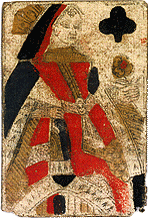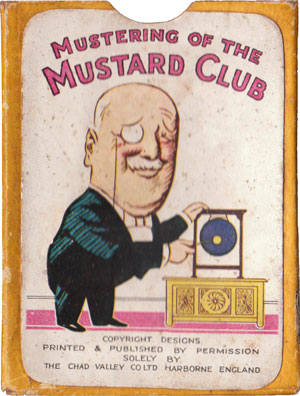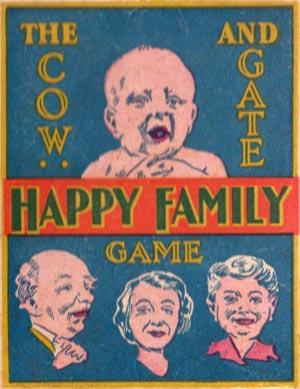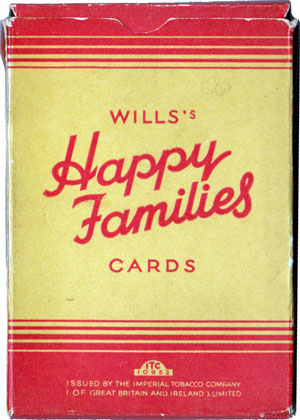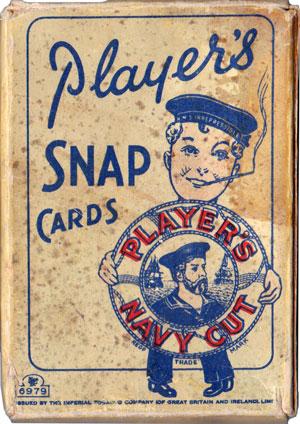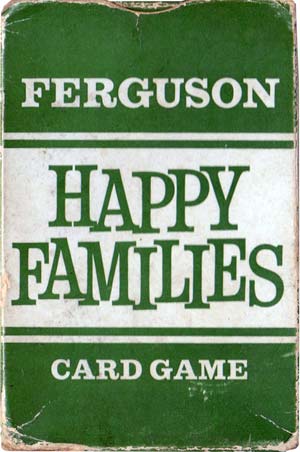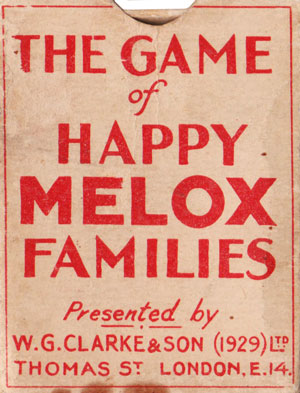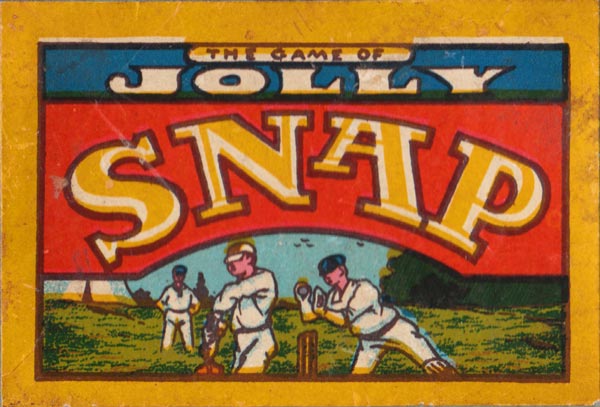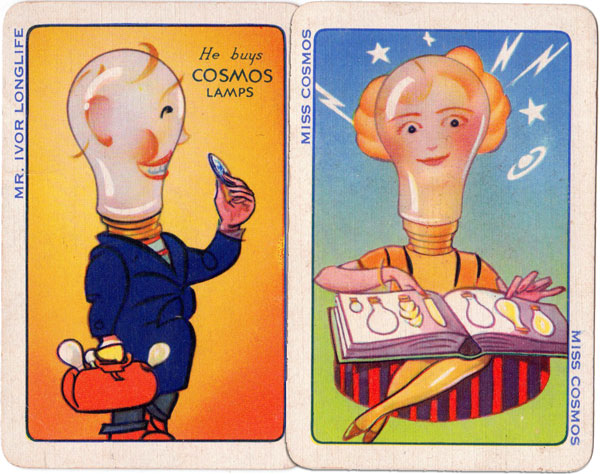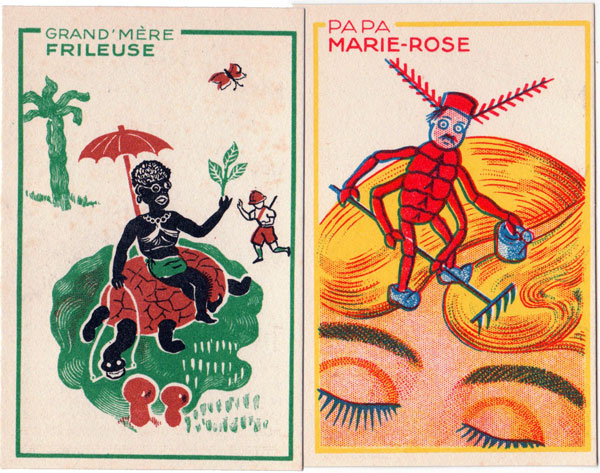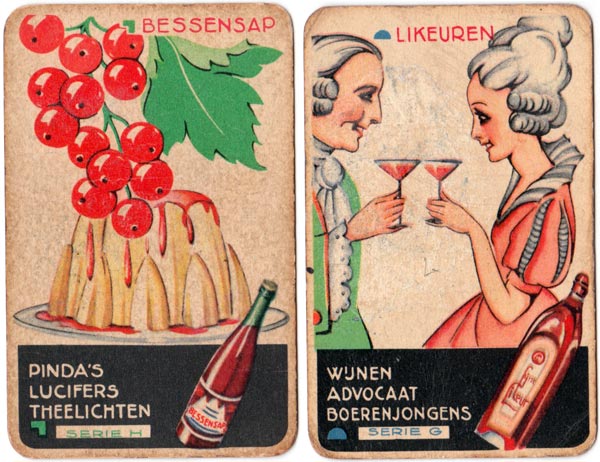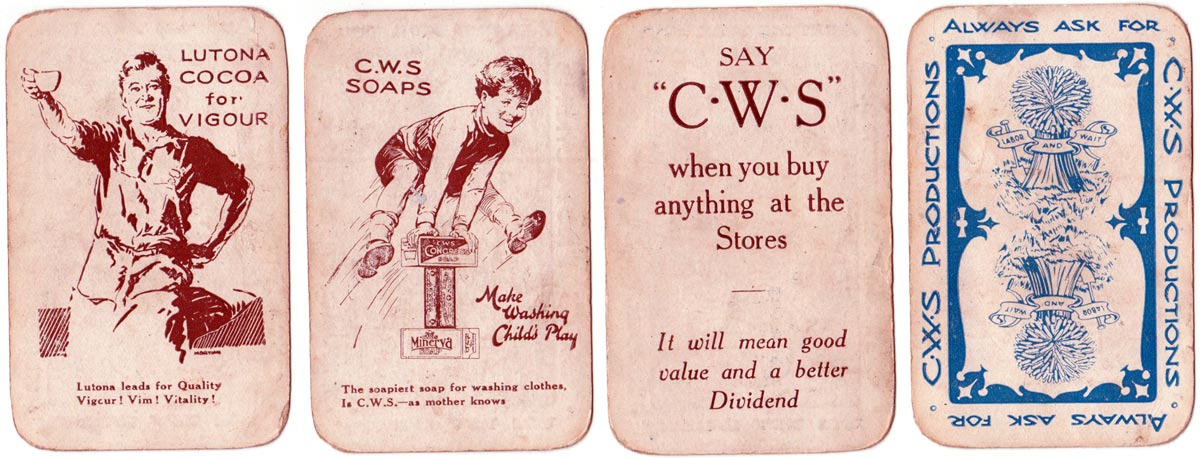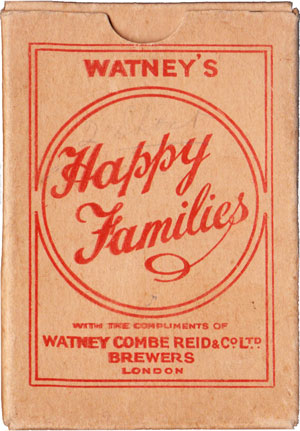Standard and Non-standard Playing Cards
Standard playing cards are based upon traditional designs and are used for card games.
Above: standard playing card, 1700
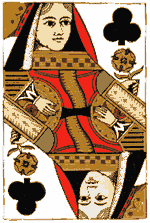
Above: standard playing card, 1865
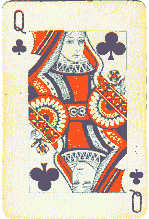
Above: standard playing card, 1935
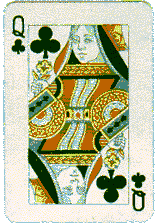
Above: standard playing card, 1965
Standard Playing Cards
Standard playing cards are those in which the court card figures are based upon traditional designs whose features do not change much over time. Players recognise the cards immediately and expect to use these for everyday card games. The number cards are arranged clearly and logically. Standard packs are made by most manufacturers, although there may be different standard patterns in different regions within a country. There are also several different national suit-systems, alternative court card hierarchies as well as the number of cards in a pack.
The illustrations (right) show how English playing card designs have evolved from full length figures, with square corners and no indices, to double-ended ones, with the addition of indices, although the same basic designs are always discernible.
During the 19th century the court cards were often flipped horizontally so that the pip sign and index lie at the top left-hand corner, to make fanning the cards more convenient.
By around 1880, rounded corners had become the accepted norm in England. The Printer and Stationer of January 1880 reported that "… it appears that most of our card manufacturers make round cornered cards now - their convenience being undeniable." However, square cornered cards were still produced until around the turn of the century.

"Life is a pack of cards.
Childhood's best cards are hearts;
youth is captured with diamonds;
middle age is conquered by a club,
while old age is raked in by the insatiable spade."
One standard pattern in particular enjoyed great success and was widely imitated - the Paris pattern. Derivatives of several other French regional patterns also became new patterns in many European countries more►
Non-Standard Playing Cards
Non-standard playing cards are those in which the court cards, pip cards, aces and/or jokers have deviated from the traditional, 'standard' pattern and have been stylised, decorated or re-designed. For example, fantasy historical court cards, humorous cartoons, decorative aces, and so on. Sometimes the court cards are representations of political personalities. A pack of cards may be produced to honour a royal commemoration, a new tourist attraction or the next millennium. Sometimes the shape of the cards is different. These types of card are a distraction to serious card players, but often sought by collectors.
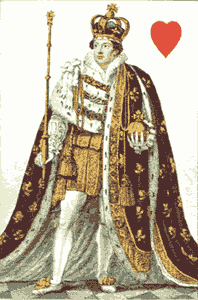
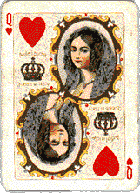
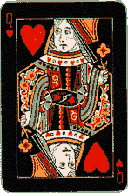
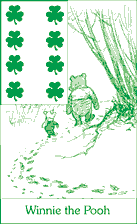
Above: non-standard English playing cards, c.1820-1999. Not so easy to recognise at first glance.
Advertising Playing Cards
Advertising playing cards display advertising messages, either on the reverse of the cards, or else on the pip cards, court cards, aces, jokers or even the box. They may be given away freely, but not always easy to get. Some of the more popular collector's advertising themes include breweries, shipping lines, and household products. The style of advertising on playing cards changes over the decades, due to changing technologies, fashions and taste.
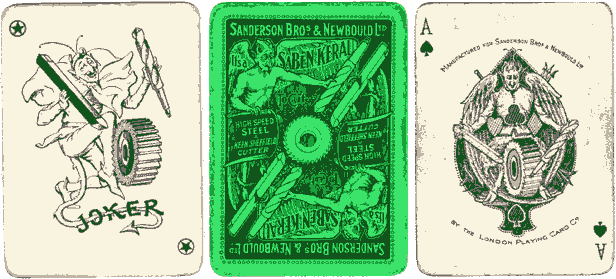
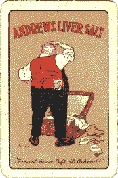
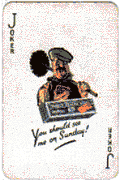
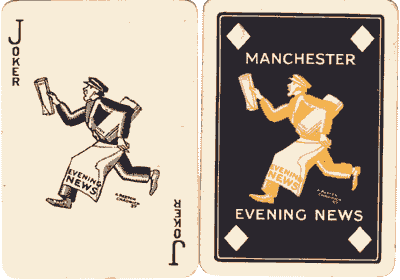
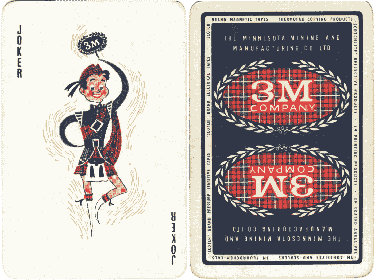
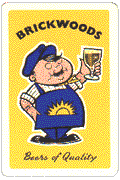

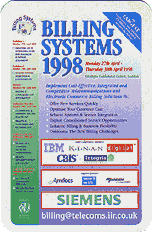
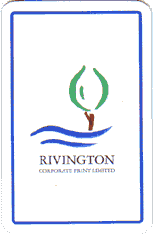


With the covergence of digital technologies towards the end of the 20th century, the cost of producing custom playing cards, i.e.non-standard, fell whilst old-fashioned technologies became obsolete. Small custom print runs became feasible with photoshopped artwork inserted easily into the printing. Thus from this point onwards non-standard cards have become cheaper to produce and are now more prevalent than standard ones.
Card Games
Card games are a part of our cultural and social history. They reflect the story of our life since our childhood. The style and design of card games from the nursery to adult drinking games encompasses a wide range of different material, much of which stimulates debate and differences of opinion. For example, whilst "Snap", "Happy Families" and "Old Maid" are familiar titles, other games such as currency, travel or war-time card games are less common, and they all provide something new to learn.
Children’s Card Games with Advertising
Sales incentives - from the collection of Rex Pitts
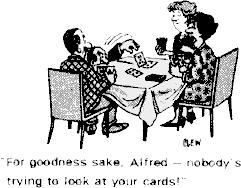
Ephemera
Some collectors enjoy items connected with playing cards, such as score cards, markers, ash trays, glasses, erasers, key rings, post cards, advertisements, brochures, stickers etc. Whatever you may decide to collect, it will lead to new discoveries, hours of 'hunting' and much pleasure.

By Simon Wintle
Member since February 01, 1996
I am the founder of The World of Playing Cards (est. 1996), a website dedicated to the history, artistry and cultural significance of playing cards and tarot. Over the years I have researched various areas of the subject, acquired and traded collections and contributed as a committee member of the IPCS and graphics editor of The Playing-Card journal. Having lived in Chile, England, Wales, and now Spain, these experiences have shaped my work and passion for playing cards. Amongst my achievements is producing a limited-edition replica of a 17th-century English pack using woodblocks and stencils—a labour of love. Today, the World of Playing Cards is a global collaborative project, with my son Adam serving as the technical driving force behind its development. His innovative efforts have helped shape the site into the thriving hub it is today. You are warmly invited to become a contributor and share your enthusiasm.
Related Articles

Happy Families
A cautionary tale...

Luditz Pattern by Georg Geiselreiter
The discovery of 2024 changes the current state of knowledge of the history of this pattern.

Czech National Patterns by S.D. Modiano
Modiano produced cards with the Prague and Trappola patterns in the early 20th century.

Doppel-Deutsche Karten by Bratří Willnerové, Teplice
This deck from local manufacturer Bratří Willnerová offers a standard version of the popular Central...

Prager Pattern by Bratří Willnerové, Teplice
Traditional single-ended Prager pattern by Willner Brothers from northern Bohemia.

English Pattern by B.P. Grimaud
Standard English pattern published by B.P. Grimaud with engraving by F. Simon, c.1880.

The Douce Collection
The Douce Collection of playing cards in the Bodleian Libraries, University of Oxford.

Are Playing Cards a Good Investment?
Playing cards can appreciate modestly, with historical annual gains of 2-3%. Rare cards offer higher...

English cards from the reign of Charles II
This article explores a historic pack of English playing cards from circa 1675, likely used by King ...

Why our playing-cards look the way they do
Analysis of early playing card designs: origins, suit differences, standardization, technological ad...

Introduction to Collecting Themes
Playing cards can be broadly categorised into standard and non-standard designs, with collectors app...

Early German playing cards
Some early examples of popular German playing cards from the XV and XVI centuries.

Collectors pack of Antiques
Collectors pack of Antiques playing cards published by Collectors Cards, Abertillery, South Wales, c...

Standard Swiss-German pattern (single-ended)
20th century version of a single-ended Swiss-German pattern pack for the game of Jass.

English pattern from Nigeria
A standard pack from the most populous country in Africa.

Goodall’s modernised Wüst House pattern playing cards
A remodelled version of the first Wüst house pattern.
Most Popular
Our top articles from the past 28 days


